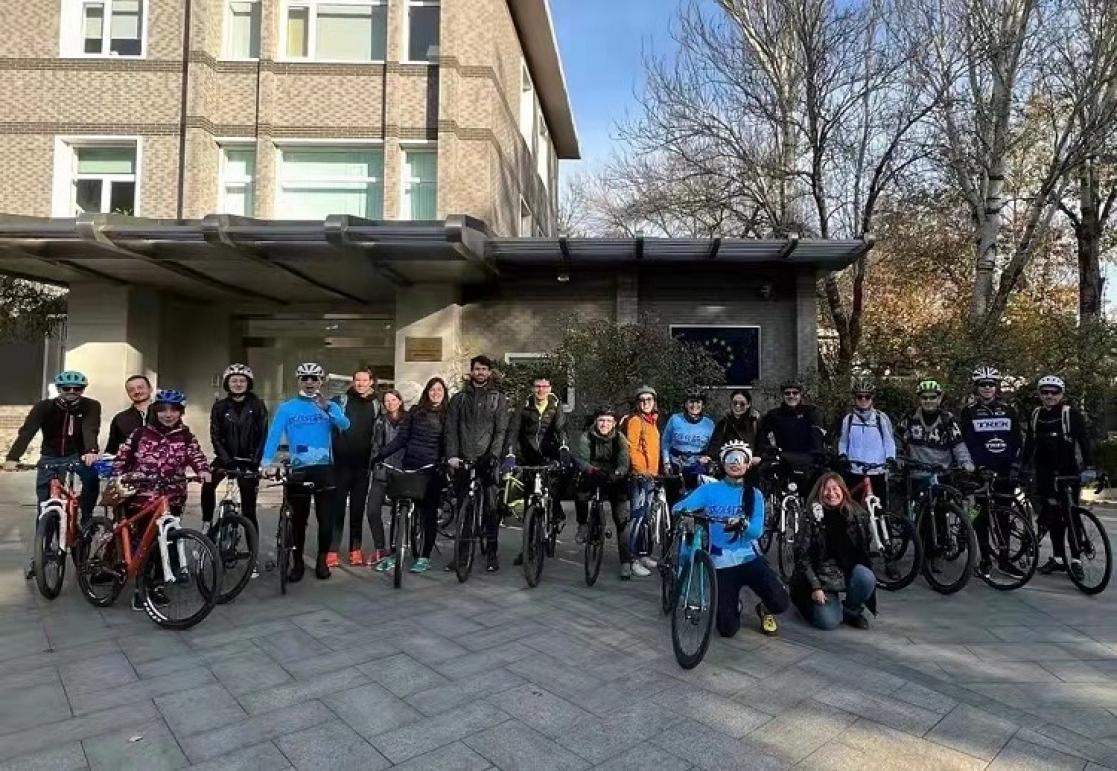Sustainability Tour – Week 3: Embrace sustainable living on cycling tours around Beijing and Zhejiang
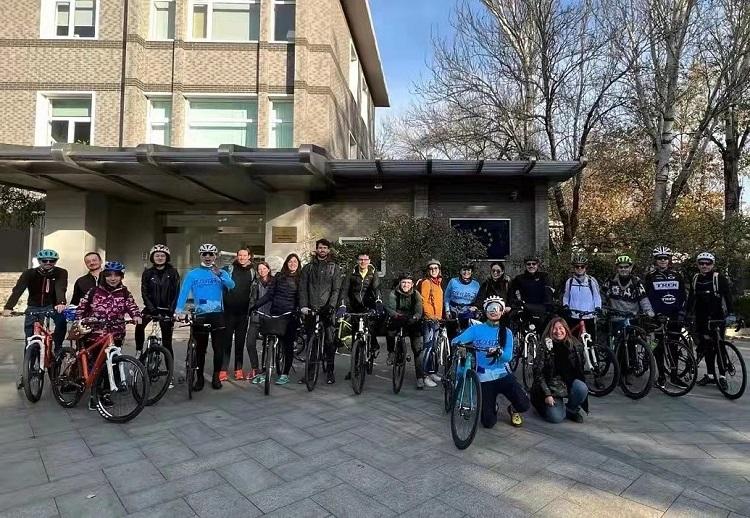
Three weeks after the launch of the "Sustainability Tour" online campaign, @Rose就是肉丝儿呀and @Steve曾乐 continuetheir cycling journey. This week, they visited new sustainability projects in Beijing and Zhejiang and explored other perspectives on sustainable living.
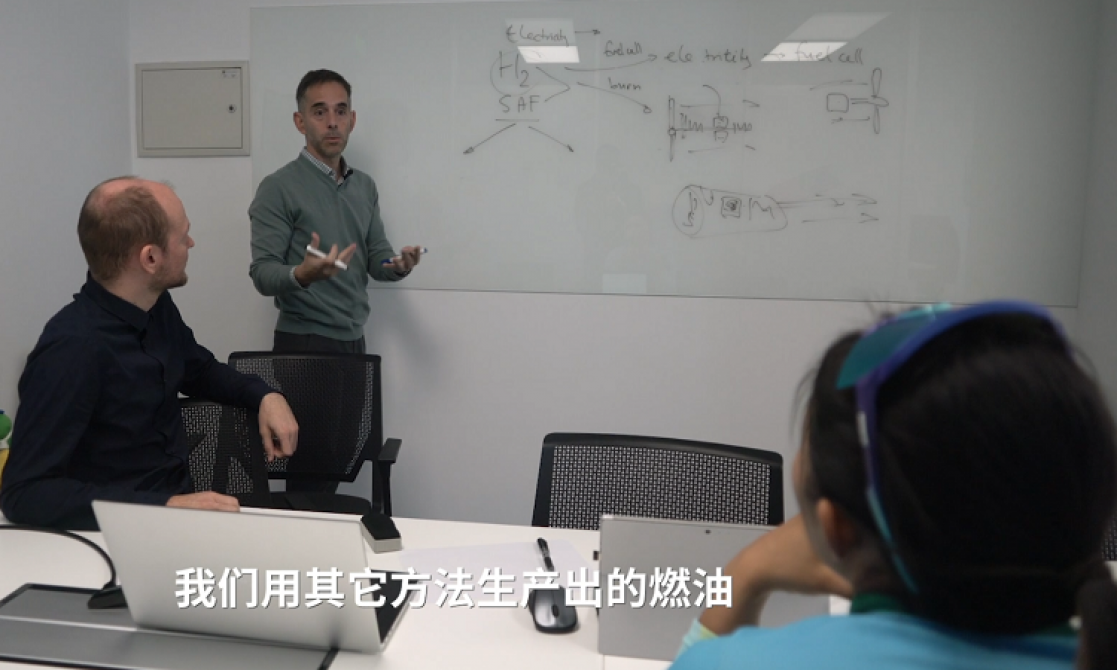
EU-China Aviation Partnership Project (APP)
Location: Diplomatic Office Building, Liangmaqiao
Curious to learn more about the EU-China Aviation Partnership Project (APP), Rose did a 20-minute bike ride from Chaoyang Park to Liangmaqiao , riding a distance of 5.2 kilometers and reducing carbon emissions by 1,157g. Javier Vicedo, Chief Representative of the European Aviation Safety Agency (China and North Asia), and Jesper Jansen, Project Operations Representative, explained to Rose that the aim of the EU-China Aviation Project is to bring together the expertise of both European and Chinese airlines to accelerate the development of environmental solutions and standards for the aviation industry.
EASA, the European Union Aviation Safety Agency, is working to expand the use of sustainable aviation fuels such as hydrogen, in order to develop more efficient aircraft engines.
Through the process of technology development, we make sure that we maintain our connections with both people and Nature, and so we can continue exploring and broaden our views of the World.
Learn more about this project: https://www.eu-china-app.org/cn-about-eu-china-app
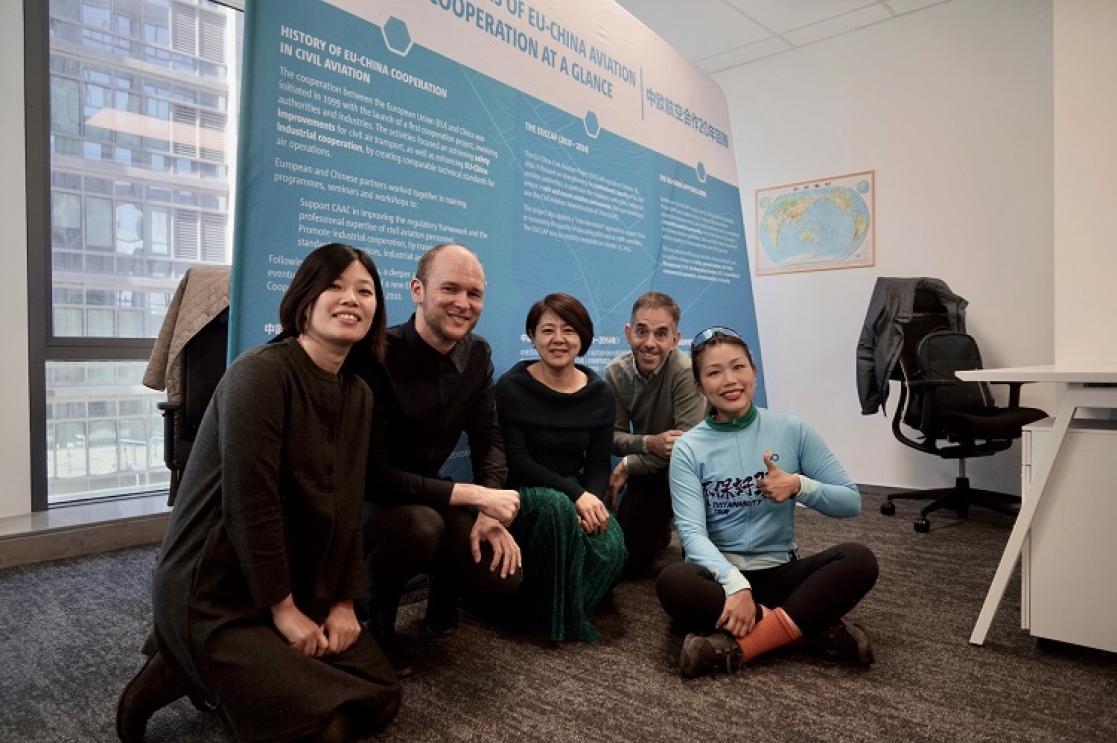
Sustainable lifestyle led by IKEA
Location: IKEA Xihongmen store
This time, Rose took a longer ide and cycled for 2 hours and 15 minutes to the IKEA Store in Xihongmen. In this trip, she reduced her carbon footprint by 8,314 gr. Gao Jian, the leader of IKEA’s sustainable development team, explained to Rose how IKEA fulfilled its corporate social responsibility and facilitated sustainable development in China. One of the projects consisted of installing solar panels on the roof of office buildings and helping enterprises reducing carbon emissions by adopting green sources of electricity. Other interesting ideas include making cabinet doors in offices out of recycled water bottles and designing IKEA 365+ boxes for employees with a drain function to extend the shelf life of food.
Ikea seeks to integrate the concept of sustainability into all aspects of the company's development. For instance, by selecting more sustainable raw materials, by saving energy and reducing carbon emissions stores operations, and sharing sustainable life concepts with customers to help them building more sustainable homes.
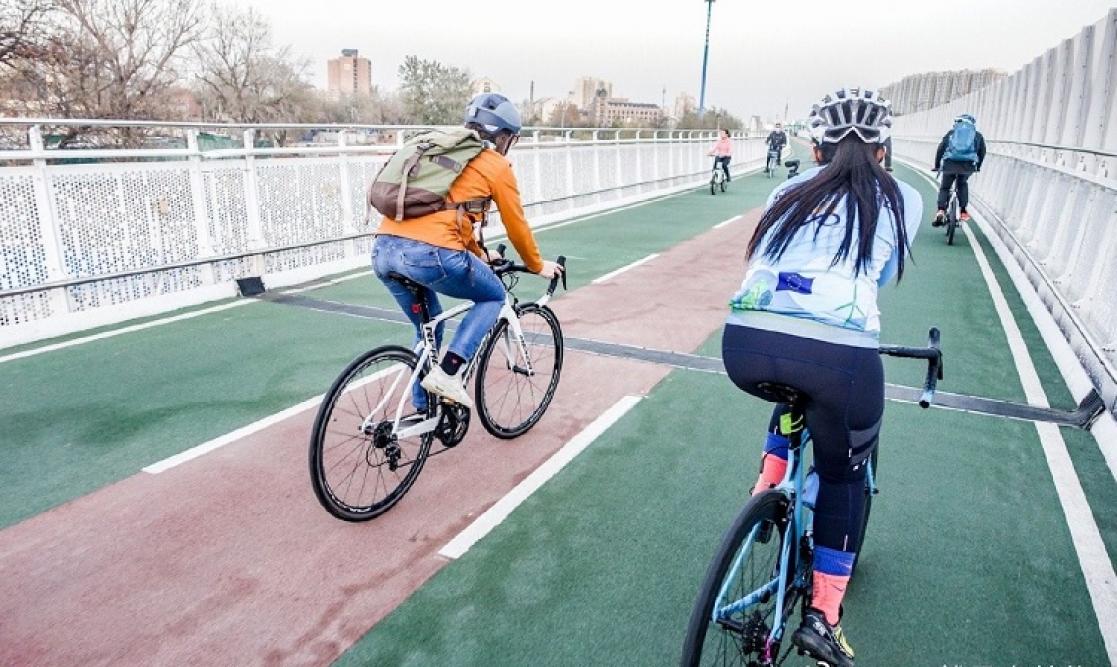
EU bike tour and hike to Fragrant Hills
Location: Xiangshan Park, Beijing
On the weekend, taking in the last breath of autumn, Rose gathered more than 10 friends from the Belgian Embassy and the EU Delegation to China to ride 30 kilometers from Liangmaqiao to Xiangshan Park. The whole journey lasted 2.5 hours, with a reduced carbon emission of more than 9 Kg per person. After arriving at the park, the group hiked in Xiangshan Mountain for 2 hours. On the way to the peak, Rose took care to pick up any trash she saw and put it in the bin, personally practicing the concept of "trackless mountain". When having lunch, the group also helped to cut down on waste by using their own reusable EU chopsticks.
Visit to Huilongguan Cycling Lane
Location: Huilongguan, Beijing
After the hike, Rose and her friends cycled for an hour and 50 minutes from Xiangshan Park to the Huilongguan bike lane, a joint project between Belgian designers and the Chinese government. The 22-kilometer ride reduced carbon emissions per person by more than 6 Kg. In Huilongguan, Rose met Zhuang Yongwen, a senior architect and chief designer of the project, and Gauthier Ralet, a Belgian construction engineeralso involved in the project. She learned that the Huilongguan cycling lane has been used by more than 4 million people since its opening on January 1, 2019, saving 1,100 tons of carbon emissions. Zhuang also introduced several design highlights of the bike lane, including red tidal lanes, a 2.5% cycling gradient, non-inductive expansion joints, soundproof/windproof glass as well as a safety fence.
During the ride, Rose not only enjoyed the romantic scenery of the changing seasons, but also reflected more on the meaning of sustainable development. Systematic urban planning improves our quality of life; it is the result of the rich experience of designers and builders, made up of design and technical details that take into consideration the user’s perspective.
Learn more about this project: https://www.chinanews.com.cn/sh/2019/05-29/8850533.shtml
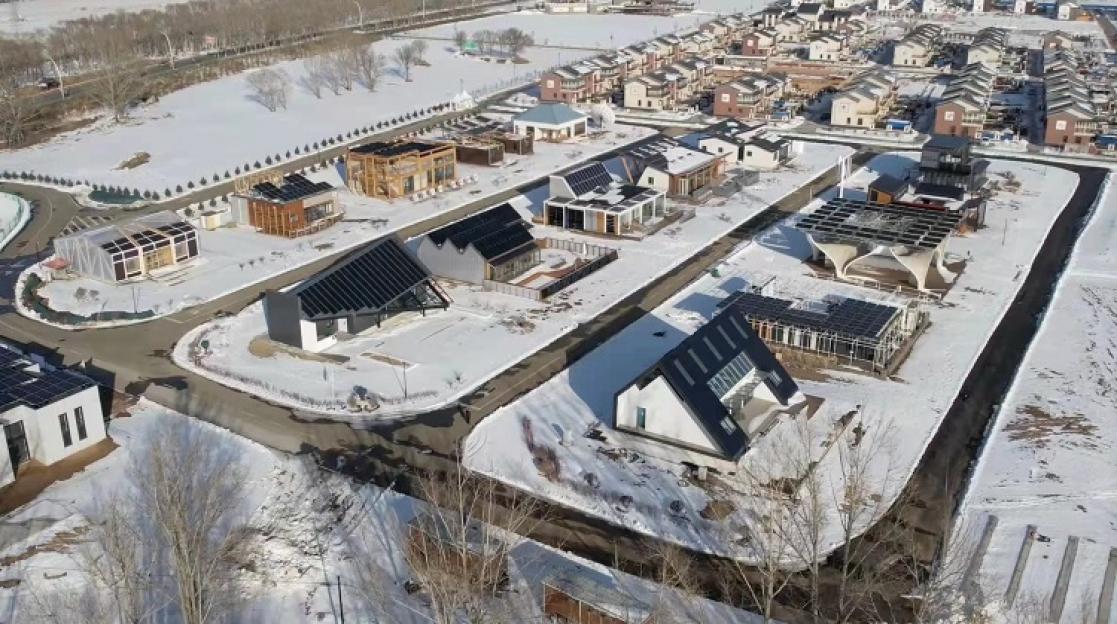
Aurora House project
Location: Zhangjiakou City, Hebei Province
After her cycling trip in Beijing, Rose contacted her friend Yunxin, an outdoor blogger who was on a business trip in Zhangjiakou. She asked him to visit the Aurora House, a project developed by the Technical University of Denmark and Suzhou University. Aurora House is located 70 kilometers from downtown Zhangjiakou. It is an environment-friendly house built with non-toxic materials, with plenty of natural light and intelligent ventilation. The cabin, which combines a studio, a study and a fitness center, is a new type of building that maximizes use of resources, protects the environment and reduces pollution.
The development of “green” buildings has been a key link in achieving the "dual carbon" goal. Building materials manufacturers can reduce carbon emissions in the production process, through new insulation materials, energy-saving doors and windows, long life and high durable concrete and other new technologies. At the same time, companies can also promote the construction of prefabricated concrete buildings, in order to improve production efficiency.
Learn more about this project: https://mp.weixin.qq.com/s/QJ0m1LeQ-DCmDgz0elE-VQ
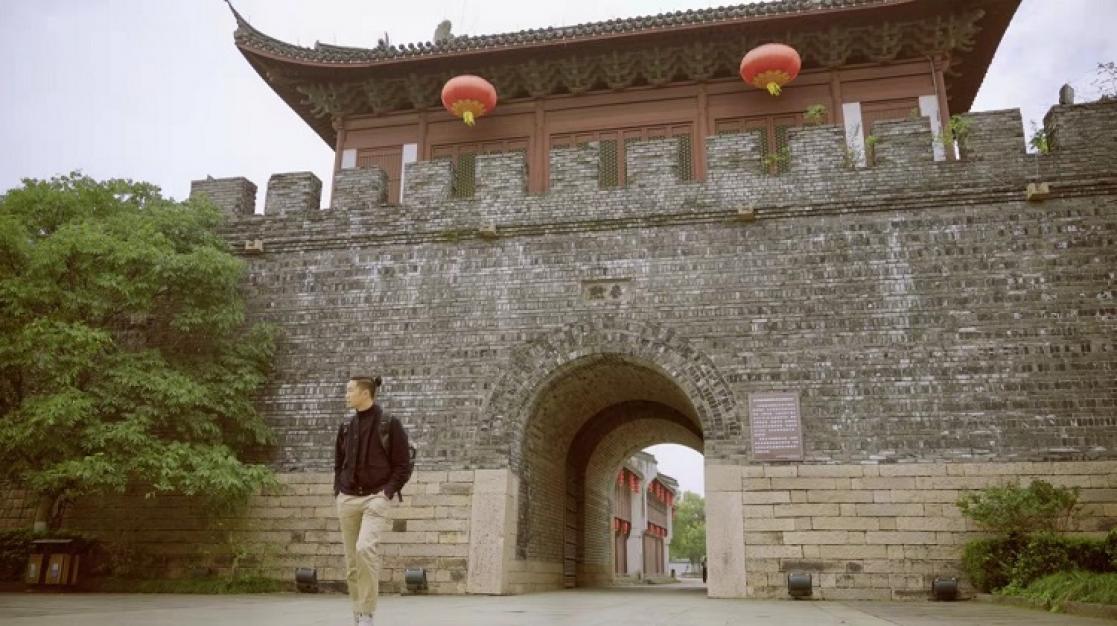
Ecological diversity and sustainable development
Location: Haining Yanguan Lake , Zhejiang University of Finance and Economics, Oriental College
This week, Steve travels to a new destination, Zhejiang Province. Stepping into the calm nature of the Haining Yanguan lake, the endless sound of insects and birds made it clear that biodiversity exists not only in the mountains, lakes and grasslands, but also in noisy urban areas. Birds such as the mandarin duck, kestrel, black-winged kite, Northern red start and the grey plover can be seen everywhere in the scenic area, showing a great range of ornithological life.
On leaving the lake, Steve cycled to the East College of Zhejiang University of Finance and Economics. The whole journey lasted for 1 hour and 22 minutes, with a reduced carbon emission of more than four kilos. Sitting on the campus lawn, Steve talked with two students about sustainability. Ying Hangting, who won the first prize of the China-EU Biodiversity Creative Video Competition, believes that sustainable development is a harmonious state in an upward spiral. Wang Junyao, an intern at the Youth Biodiversity Network, believes that sustainable development is about balancing people, animals and plants, all living in the same space.
Steve believes that it is our responsibility to protect biodiversity. In terms of genetic structure, the difference between humans and other organisms is simply a combination of bases. Life is not about buildings, subways or shopping districts, but other living creatures.
Learn more about this project: https://mp.weixin.qq.com/s/MnEHGNHYXp90orPlxDU8JQ
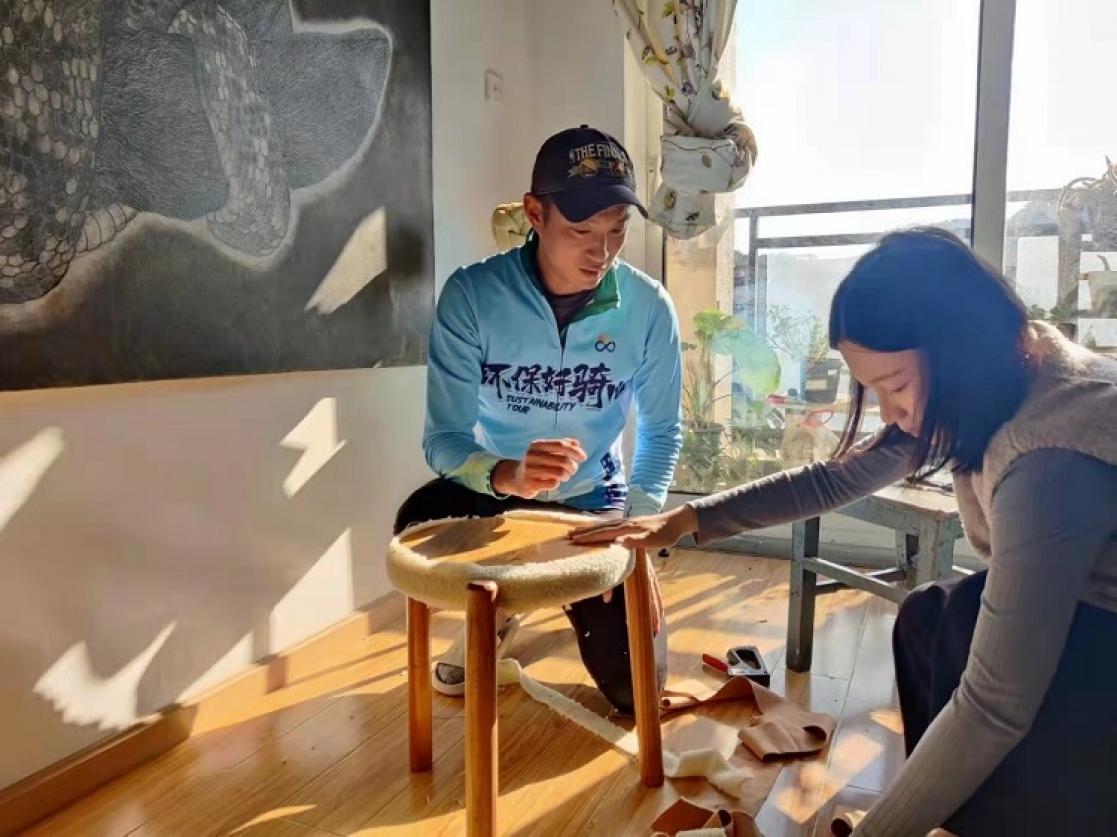
Go to the fields! Arts Resident Scheme
Location: Lianshi Town, Huzhou City
After leaving the campus in Haining, Steve embarked on a challenging cycling journey from Jiaxing to Huzhou, a distance of about 130 kilometers, to see the ‘To the field!’ exhibition recently being carried out in Huzhou. In the Art Residency Program, artists from different fields such as painting and architecture present a joint exhibition. Steve also participated in the artistic creation. Referring to a previous installation in the exhibition, he tied residents' old clothes to an old chair donated by the Finnish Embassy to weave it into a padded chair. This is an act of both artistic performance and environmental protection.
Steve also learned that the project helps the public to explore the unknown countryside in the form of artistic creativity, thus building bridges between people, people and place, and people and art. Renovation not only helps to protect the old buildings and the artistic heritage they represent, but also shows us how we can adapt these buildings for the changing needs of urban design, all the while changing how we view the countryside.
Learn more about this project: https://mp.weixin.qq.com/s/eowIR6FRpnQsUukr3M_tOA
This week Rose and Steve had a wonderful cycling trip in Beijing and Zhejiang, where they gained new insights into sustainability and the interconnections between different fields. See you next week!
